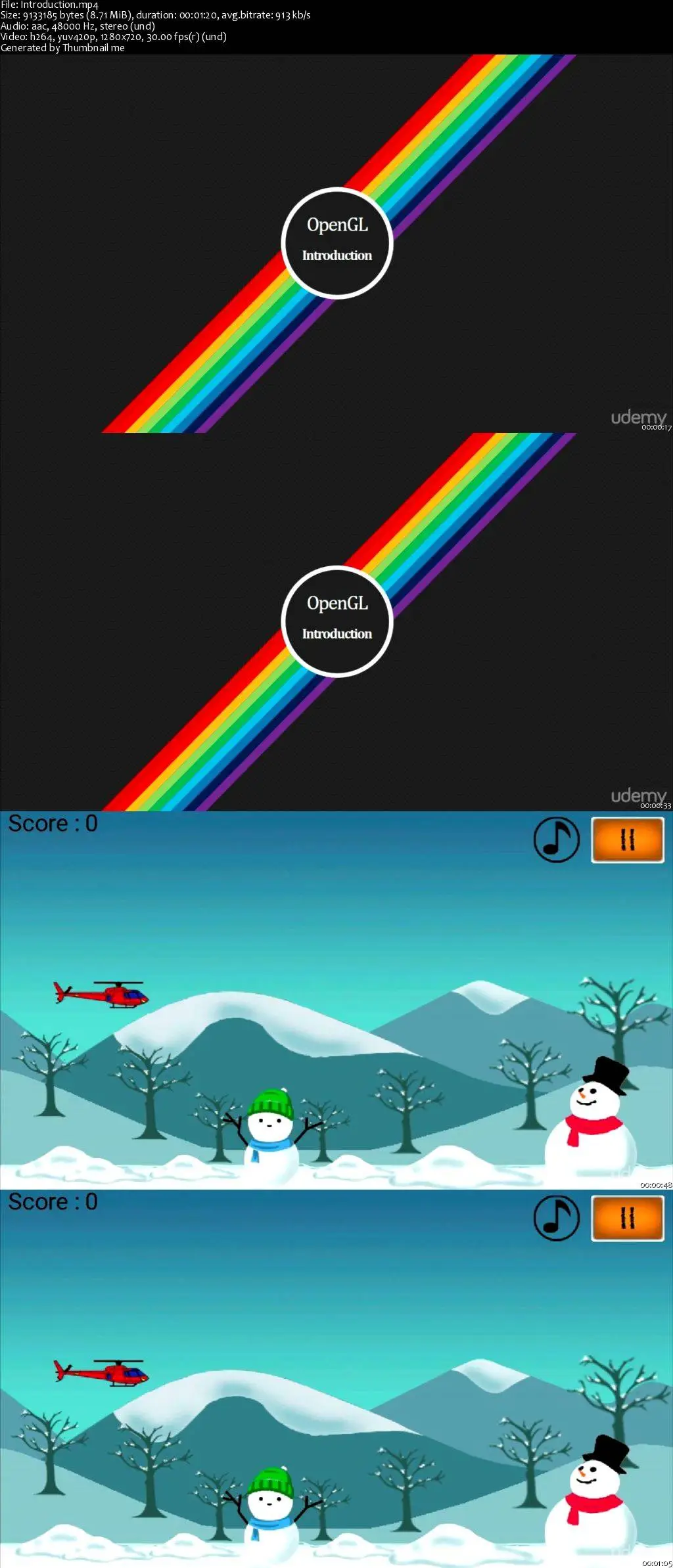Using OpenGL ES for Android 2D and 3D graphics acceleration
MP4 | Video: AVC 1280x720 | Audio: AAC 44KHz 2ch | Duration: 1.5 Hours | 300 MB
Genre: eLearning | Language: English
MP4 | Video: AVC 1280x720 | Audio: AAC 44KHz 2ch | Duration: 1.5 Hours | 300 MB
Genre: eLearning | Language: English
Mobile game developers using Android can learn how to use OpenGL ES for hardware graphics acceleration for their games
After completing this course, you will have a thorough understanding on how to create shapes and effects in 2D and 3D using OpenGL ES. You will be capable of creating your own mini games in Android using OpenGL ES which would be hardware accelerated.
What games use OpenGL ES?
Games like color switch, circle etc. utilize OpenGL ES. Even if hardware accelerated games don’t utilize OpenGL ES directly they utilize libraries on top of OpenGL ES e.g. libGDX. You should have a thorough understanding of OpenGL ES before you start working on those libraries as well.
Things you'll learn from this course…
understand transformations, rotations, and scaling in both 2D and 3D. They would be understand functions like glRotate(), glScale(), glTransform() etc.
understand functions like pushMatrix(), popMatrix() etc. to manage matrices in OpenGL ES.
how to load textures.
Understanding OpenGL ES is extremely important for anyone who wants to move forward towards development of hardware accelerated android games in both 2D and 3D.
Prerequisites for this course…
Students must have basic knowledge of Java.
Students must have Android Studio installed on their computer.





